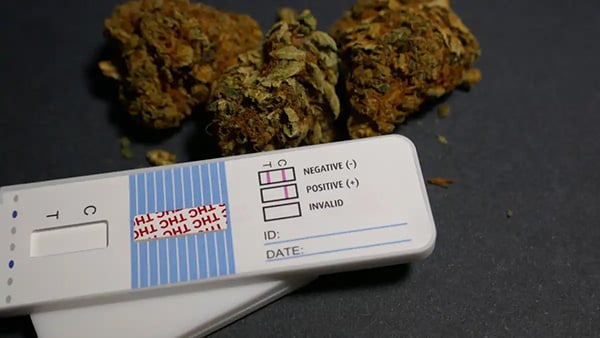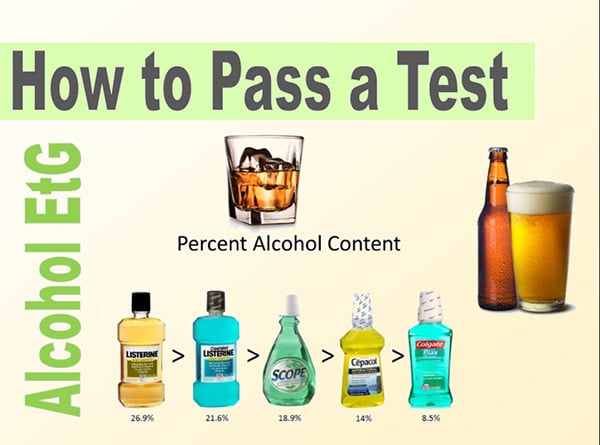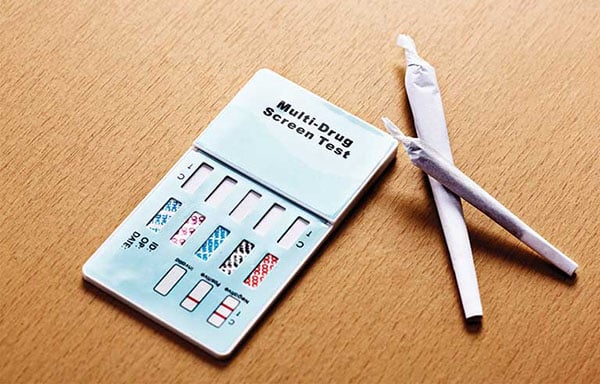How to pass a drug test for weed?
How to pass a drug test for weed?

Searching for "how to pass a drug test" on Google sometimes brings up an overwhelming mixture of information, including quick fixes, myths, and bad advice from strangers.
So, what should medical marijuana or recreational marijuana consumer do when you only need a single, reliable answer?
If you have to pass a cannabis drug test, it is important to understand how drug testing and detoxification work to put yourself in the best position to pass. We've broken down everything for you here, so you don't have to crawl the forums and blogs searching for the answer.
How long does cannabis stay in your system?
Cannabis can be detected in your body for up to 120 days.
Urine test: 30-45 days (daily consumer)
Blood tests: 45-60 days
Hair test: 90-120 days (daily consumer)
Saliva test: 1-7 days (daily consumption)
What factors determine the time for THC to remain in your body?
Three main factors determine how long cannabis remains in your system.
Weight (BMI)
Metabolic rate
THC levels in your body
The natural rate at which THC is removed from your system varies from person to person. It depends on many factors, including age, weight, metabolism, frequency of exposure, duration of exposure, and potency of the cannabis consumed.
For most people, it can take 4-6 weeks for traces of THC in marijuana to exit your system naturally from the last time you consumed it. Unlike other testable substances, THC is fat-soluble, meaning it is stored in your fat cells and organs.
The less frequently you consume THC and the fewer fat cells you have to mean, the quicker you can cleanse your system of THC.
As you might have guessed, the opposite is also true. The higher your body fat and the more frequent and concentrated your consumption, the longer it will take to get all that THC out.
What types of drug tests are available for cannabis?

There are four tests used for detecting cannabis in your body.
Urine test: The most common method of drug testing.
Hair testing: The fastest-growing new way to test drugs
Blood test: Less common - usually used to test specific or approved drugs.
Saliva testing: Least common - commonly used for government/roadside drug testing.
Urine testing is the most commonly used drug testing method by employers and drug testing laboratories because of its convenience and low cost.
Hair tests are becoming increasingly popular with the government and certain employers with professional positions because of their unique ability to detect prior drug use for more extended periods than other tests, Sometimes for months.
Larger companies and government agencies will conduct blood tests. Saliva tests are commonly used for roadside testing if there is a suspicion of intoxication.
You can ask which test will be given to know what to prepare for test day. Laws change state by state and across different industries. Apart from some heavily regulated industries, the federal government has very little say in drug testing. Be sure to check the laws in your state.
How does cannabis testing work?
Cannabis will leave traces of THC in your fat cells, and these traces will be deposited in your bloodstream so that these traces can be detected by drug tests designed to check your urine, blood, hair, or saliva.
Urine analysis
Measured in nonograms per milliliter, ng/mL, the common threshold for these tests is 50ng/ml or higher THC in your system.
To pass the test, you should have less than 50 nonograms of THC per milliliter of urine for the test to show negative.
The best method of overcoming this test is to flush your system with lots of fluids for several days leading up to the test. Several detox drinks and kits on the market claim to aid in flushing your system.
There are two different types of urine rug tests. The most common immunoassay is the cheaper of the two options, and it can provide the results quickly. Like most quick and cheap things, this test method has some disadvantages. Sometimes the immunoassay test will give a false positive.
If your initial test results are positive, a second test is used to confirm the results.
Gas chromatography/mass spectrometry (GC/MS) tests are more expensive and take more time to get results; however, this is a more reliable test and gives rarely produces false positives.
Urine tests can return diluted results, meaning the test is inconclusive and must be repeated. Test retakes usually occur the following business day, which provides extra time to detox. Urine tests can also produce a false positive (you're clean, but it says you're dirty) and false negatives (you're dirty, but it says you're clean), so there is sometimes the option of contesting the results and demanding a retest.
Blood test
When identifying recent cannabis use, blood tests are the best choice to identify THC in the system. THC can be detected in your blood within seconds after smoking; This is why under some circumstances, roadside tests can be blood tests.
You may have only taken a puff or two with friends, yet THC can be detected in your blood for 1 to 7 days.
However, heavy users can expect THC to remain in their blood for a long time, and similar to urine, it can be detected in your blood for up to two months after you start abstaining.
Hair test
This is another type of test that takes two tests to confirm a positive result. The first test is an enzyme-linked immunosorbent assay (ELISA), and the second test is the GC/MS mentioned earlier.
For most hair drug tests, the analysis will be done from the scalp down the first inch and a half of the hair. The average hair on the scalp grows at the rate of half an inch per month. Thus, an inch and a half of hair used for drug testing will be able to detect THC after approximately 90 days of use.
Although it can detect use over a longer time frame than a urine test, a hair test is not the best choice for identifying recent marijuana use. That's because it can take up to a week for traces of THC to appear in your hair. In addition, certain medications are known to produce false positives, so be sure to let your tester know if you are taking any prescription or over-the-counter medications.
Oral swab test
Oral swabs are becoming increasingly popular because they can be administered quickly and provide accurate information about recent use; However, they are only reliable for recent use. Because of this, law enforcement has turned to mouth swabs as a way to determine if someone is driving under the influence of drugs.
Do these common methods for passing drug tests really work?

Natural cleans: It may take 30-60 days.
Detox kits: These clean your system of THC indicators in 5-10 days.
Detox drink: Thes drinks can temporarily flush the THC indicators for a few hours.
Synthetic urine: it can work, but it is detectable and risky.
Home remedies: magic home remedies like Niacin, Certo, and vinegar don't work.
Other urine: Having a sample from your friend is detectable as it won't be the right temperature.
When it comes to marijuana, detoxification is a process that may take some time. The more days or even weeks you have to detox, the better. Unfortunately, not everyone has enough time.
There are many different options to help speed up your body's detox process, some of which work better than others.
Natural cleanse
Most people can finish a natural cleaning in 30-60 days. It requires you to change your lifestyle and eating habits to ensure that your body eliminates THC stored in the system.
Everyone detoxes at a different rate. However, most people can completely detox in a few weeks. Because THC is stored in fat cells, a large number of users report that it takes more than 90 days to get a clean test after abstaining from cannabis use.
If you have the time and willpower, then a natural cleanse is the best way to detox. If you don't have such a luxury, then the following options are designed to help those who need to detox faster.
These won't be completely clean; However, they can help you get negative test results. It is worth noting that the laws of several states make it illegal to lie in drug tests. Be sure to check your local laws!
Detox drinks
Detox drinks are taken on the day of the test to help stimulate the body's natural detox process; However, they also help to create a clean window for testing. Note that some detox products remove the indicators in urine that testers are looking for to make sure the sample is authentic. Remember, for a urine test, your sample needs to be the right color, the right temperature, the right creatinine level, the right pH, and uric acid.
Detoxification kits
A good quality detox kit will ensure that your urine sample is THC free without removing other indicators. In contrast to a detox drink that ensures your urine stays clean for a few hours, a detox kit will permanently flush your system of traceable THC levels.
Detox kits should typically be taken over 5 to 10 days and use a number of herbal supplements to help your body detox.
If you don't know what type of test you're getting, you might want to check out a full-body detox, including a detox shampoo. You must completely stop consuming cannabis during the detox. After completing the detox and passing the home test, your body will be free of THC levels and stay that way until you resume consumption of cannabis.
Synthetic urine
When it comes to synthetic urine, making it clean from THC is fairly easy. However, testing labs look for more than just THC levels and can easily detect fake urine or even nonhuman urine.
Testing labs are so sophisticated at this point that it's almost impossible to fake nonhuman samples.
Additionally, some tests require you to be supervised when giving a sample. So this option is probably best avoided.
Home remedies
Many home remedies, such as drinking tea, lemon juice, cranberry juice, or apple cider vinegar, don't do anything to help the detox and are supposed to help with masking THC in urine (or blood) but with very limited effect.
The only way to detox is to stop taking cannabis and give your body time to naturally detox.
There are certain things that can help speed up the process -- many of which have health benefits; however, none of them provide instant cleaning. These are myths that do not guarantee passing test results.
Reliable quality
Thankfully, there seems to be a consensus when it comes to detoxification -- and if you do need to detox fast, then use trustworthy products.
Home remedies are unreliable, so go with tried and tested methods rather than take risks.
